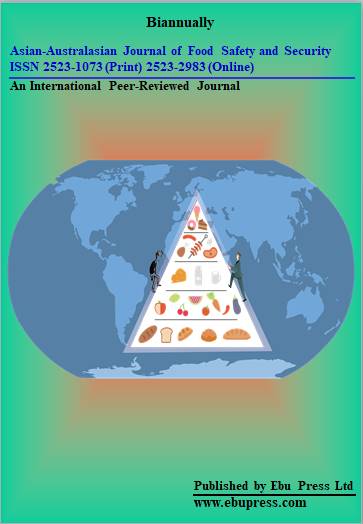AHM Taslima Akhter, SK Shaheenur Islam, Md Abu Sufian, Monowar Hossain, Shah Md. Mahfuzur Rahman, S. M. Lutful Kabir, Md Gias Uddin, Shah Monir Hossin and Md Mehedi Hossain
Abstract
PDF
The overuse of antibiotics, chemicals and as well as lack of farm biosecurity and good hygiene practices in poultry production are considered to be contributors for occurring foodborne illness and many significant public health threats reported in both developed and developing countries nowadays. Considering the above, a piloted food safety activity was implemented jointly by the Department of Livestock Services and FAO-Food Safety program, Bangladesh in twenty-five selected poultry (broiler) dense subdistricts of the country. Good Agriculture Practices (GAP) and Good Hygiene Practices (GHP) related five (microbial) plus five (chemical) Code of Practices (CoP) were adopted at the farm level (N=500) through farmers’ motivation and intensive participatory training program. It was found that average production cost reduces, the feed conversion ratio decreases and mortality rate decreases that convince increase farm profitability in the bestpracticed farms (n=81). In conclusion, Good Agriculture Practices (GAP) and Good Hygiene Practices (GHP) through certifying key control measures can increase profitability in broiler farming and CoP adapted farms found to be less public health hazardous than non-CoP farms in light of food safety and public health grounds.


